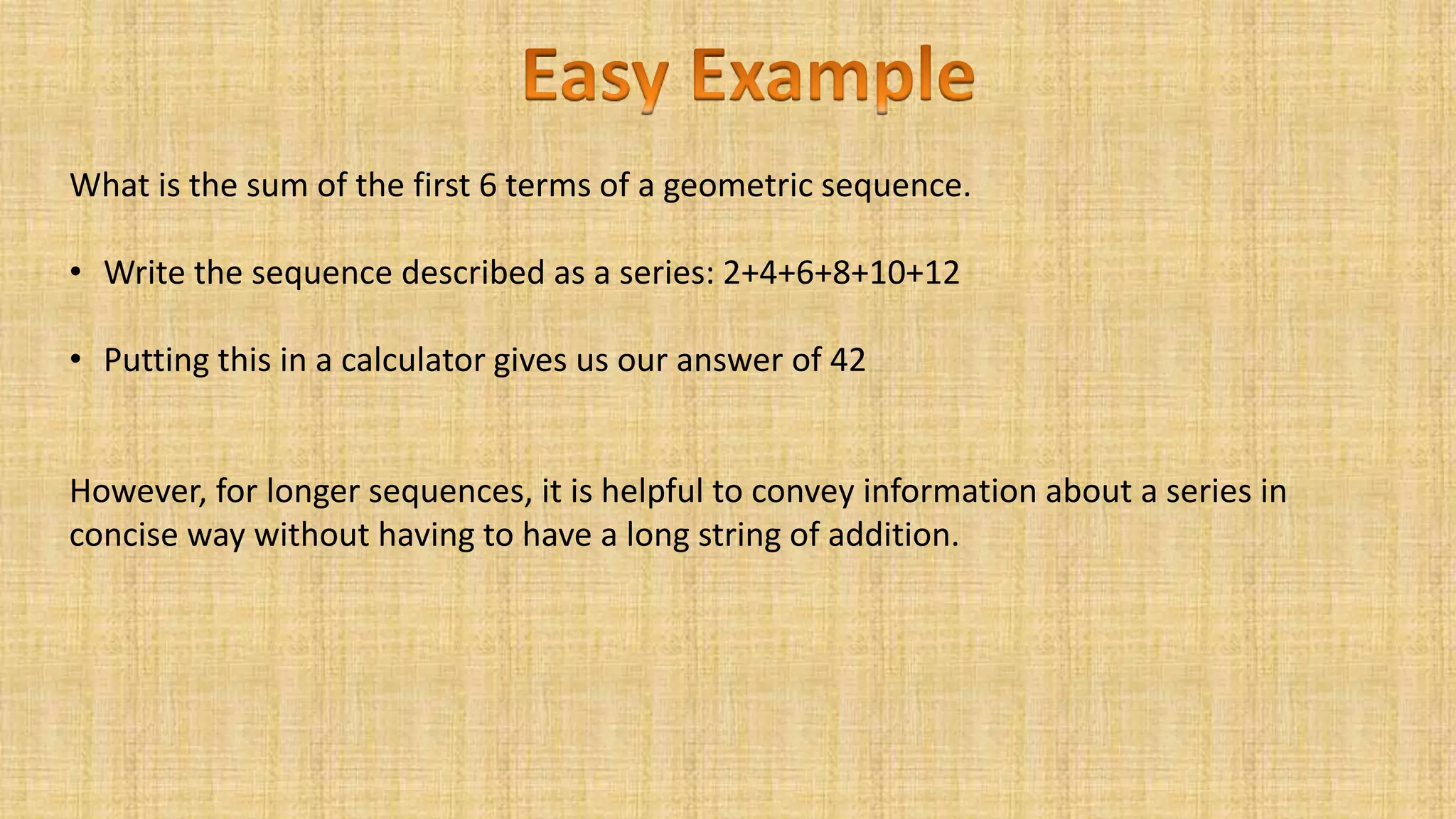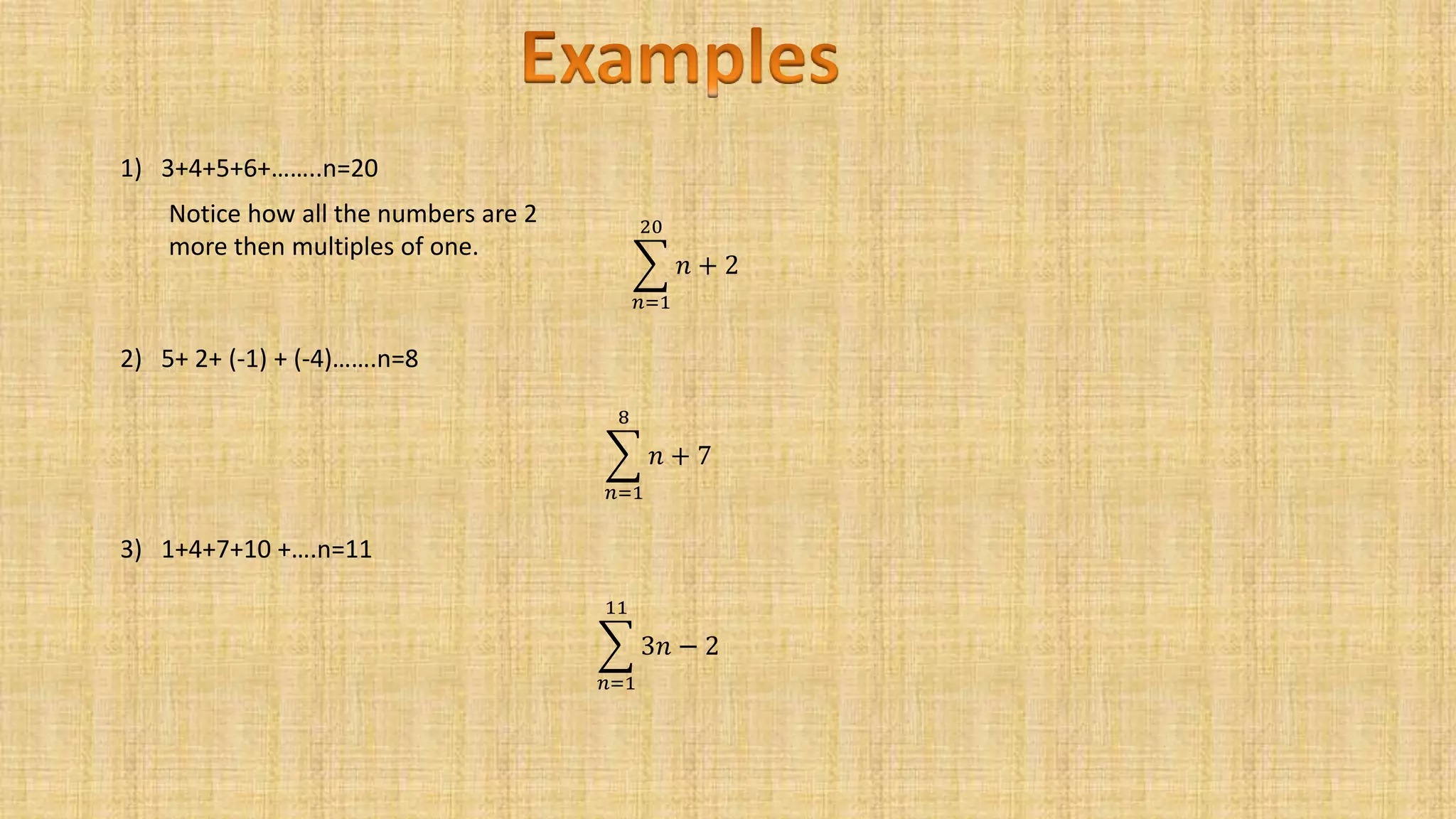1) The document describes how a 10-year-old boy was able to quickly calculate the sum of all integers from 1 to 100 by recognizing a pattern involving adding pairs of numbers that are equidistant from the endpoints.
2) Specifically, he realized that adding 1 and 100, 2 and 99, and so on up to 50 and 51 would yield the same result each time due to their symmetric relationship.
3) Multiplying this common result by the number of pairs (100) provided the final answer of 5050 without having to do the individual additions.

















